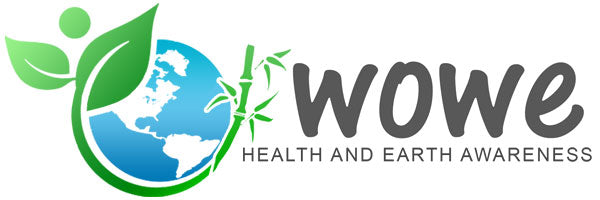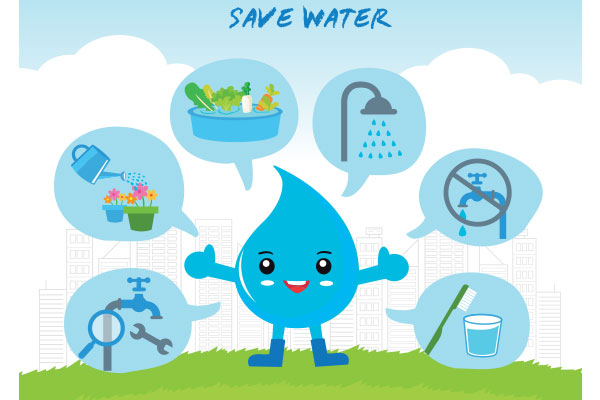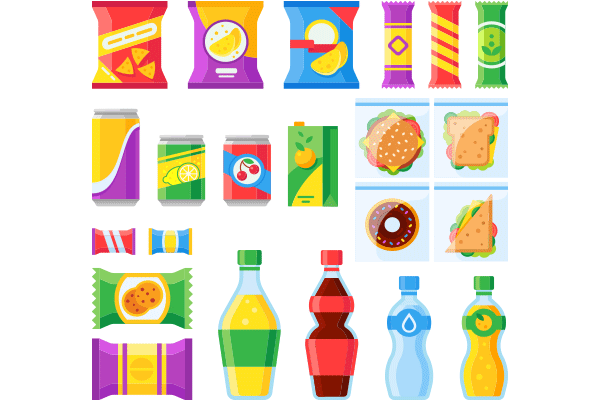September brings lots of things: Autumn, football season, and back to school time for your kids. The school year comes with many things, including many practices that are ultimately wasteful. Focused on educating kids, teachers and school administrations rarely consider the waste their school and students are producing.
No matter the age of your child, whether it is their first year of kindergarten, or you have seniors in high school, it is never too late to start teaching your children to be eco-friendly. In this guide, we will cover some simple tips for improving the eco-friendliness of your school-year routine. Though they may not receive it in the classroom, teaching children to be environmentally conscious is an important lesson, and there is no better time to start than right now.
Wastefulness in Education
You may not think of schools as being major producers of waste, but in truth, schools and educational institutions are major contributors to global waste and pollution. There are many ways in which schools are wasteful, and unfortunately, you and your children will likely not be able to address most of them. Schools produce an extraordinary amount of waste per day, with most schools averaging around half a pound per day.
In a study done in Minnesota, it was discovered that all Minnesota public K-12 schools combined produced around 483,520 pounds of waste per day. Most of this waste is attributed to food waste (compostables) and recyclable containers/paper. Though much of the waste generated by educational institutions can be disposed of in environmentally friendly ways, plenty of schools neglect to dispose of waste properly, sending much of it to landfills.
Though schools may be neglecting to handle this problem, as parents, you have the opportunity to teach your children better. Some simple lessons can help your children navigate the world in an eco-friendly way, and will help prepare them for life in the future to boot. By teaching your children to reduce their waste, recycle properly, and create eco-friendly habits, you prepare them and the world for healthy, happy living.
Lesson 1: Recycling
One of the simplest ways to reduce waste is by recycling. Though school waste is typically comprised of 40% recyclable materials, many paper, plastic, and cardboard items find their ways into landfills directly from educational institutions. Even if your child’s school does not have an extensive recycling program, you can still help your child reduce their personal waste.
Start by explaining what recycling is at home, and consider going through your own recycling routine with your kiddos. Show your children what items you recycle, and tell them what items they themselves can recycle. Simply teaching your children what is and is not recyclable can help them make more informed decisions at school.
Recycling paper is a massive energy saver since recycled paper requires 70% less energy to make than paper made from freshly felled trees. As a first step toward eco-consciousness, teaching your kids about the benefits of paper recycling is a great place to start. Once your children begin to understand how recycling works, they will begin to do it instinctively. Next time they have a scratch piece of paper, a page of homework, or other paper products, they might think twice about tossing it in the trash.
Lesson 2: Lunch Time
Beyond the huge number of recyclables throw away by schools, the other culprit of their major waste contribution is food. Food waste is a serious problem throughout the United States, with unspeakable amounts of food being thrown away every year. In fact, around 40% of all food produced in the US is never eaten but instead finds its way to landfills, or is left to spoil and rot in the fields.
In schools, the problem of food waste persists. School lunch programs are major contributors to the food waste epidemic, with around $5 million worth of edible food wasted every day. It is not scraps being thrown away, but full meals, unopened food, fresh ingredients, and perfectly good and edible products.
Though there have been initiatives by some public schools to reduce food waste or to make use of their food waste by donating it to farms, the majority have not found the time or funding to implement any true change. To help your child’s school to reduce its food waste, help by teaching your child about the importance of food.
Teach your children to take portions they can eat, not portions they will end up throwing away. Teach your child to recognize compostable vs. non-compostable food items. Pack a lunch for your child, and try to include fresh, non-prepackaged items. Not sure where to start when instilling a love and respect of food in your child? Try planting a small herb garden. By teaching your kids to grow and harvest their own food, you can show them its importance and encourage them to respect this valuable resource.
Lesson 3: Water Bottles
If your kiddo likes to bring a fresh drink with them to school each day, chances are good you go through a lot of disposable, single-use drink containers. Plastic bottles, cans, glass bottles, and other single-use drink containers may be recyclable, but that doesn’t mean they will be recycled. Recyclable items often end up in landfills, or polluting oceans and natural ecosystems. Rather than wasting more containers, consider using a reusable bottle.
Wowe Lifestyle offers an excellent Stainless Steel Water Bottle that holds a whopping 25oz, so your kiddo can have their favorite cold drink with them to stay hydrated throughout the day. This water bottle from Wowe Lifestyle is completely reusable and made with food-grade stainless steel so you never have to worry about rust or wear. Unlike single-use drink containers, this reusable stainless steel water bottle can last your kiddo years, helping you and your child to live a greener, cleaner lifestyle.
Along with being a better option for the environment, reusable bottles are also a better option for the health of your child. Many plastic products contain harmful chemicals like BPA, which has been linked to certain cancers, infertility, and certain sexual, metabolic, and sleep-related conditions. With continued use, plastic products will release higher levels of BPA, which is why single-use plastic bottles are intended for single-use. A stainless steel water bottle can help you avoid the negative effects of plastic on your body and the planet.
Lesson 4: Carpool
The transportation sector is a major contributor to greenhouse gas emissions and global pollution, with cars, busses, and other gas-powered vehicles putting serious strain on air quality for people all over the world. If your child’s school provides school busses, this is a great way to help save on greenhouse gas emissions. A single bus will use less gas than 30 families driving to school separately and is, therefore, an excellent way to conserve resources.
Unfortunately, not all schools offer bus programs, and many students must be driven by their parents. If this is the case for you and your kiddo, consider trying to set up a local car-pool club. Find other parents in your area, and build a schedule for bringing the kids to school. Reducing your weekly driving by just 25 miles can save as much as 1,500 lbs of CO2, and can also be a fun way for your kiddo to make new friends in your neighborhood!
Lesson 5: Set an Example at Home
If the few ways you can help make back to school season more eco-friendly don’t seem like quite enough, we agree with you. The best way to help your child be more eco-friendly at school and elsewhere is to set a good example at home. If you are concerned about the environment and want to teach your child to live green, create as many green practices at home as you can.
Start a rigorous recycling routine. Build a backyard compost heap. Reduce the amount of paper you use. Switch your lightbulbs to energy-saving LEDs. Help your children to build good habits and patterns that are healthy for the mind, body, and planet. Eco-consciousness is about awareness and an understanding of the resources available to you. The best way to help children understand their responsibility to the planet is to emulate those behaviors yourself and to take your own responsibility to the planet seriously.
Consider making changes to your home routine. Cut out plastic bags, and bring reusable Organic Cotton Produce Bags with you to the grocery store instead. Avoid plastic packaging, buy in bulk, and teach your children how to avoid wasteful products. These important lessons are ones they will carry with them for the rest of their lives, and simply starting is all that it takes.
Implement a few basic green-living practices into daily life, and your kiddo will be an eco-friendly expert in no time at all.
Wowe Lifestyle creates incredible eco-friendly products that make life easier and greener. Visit the Wowe Lifestyle website today to discover more environmentally friendly products and more tips for Earth-friendly living.







